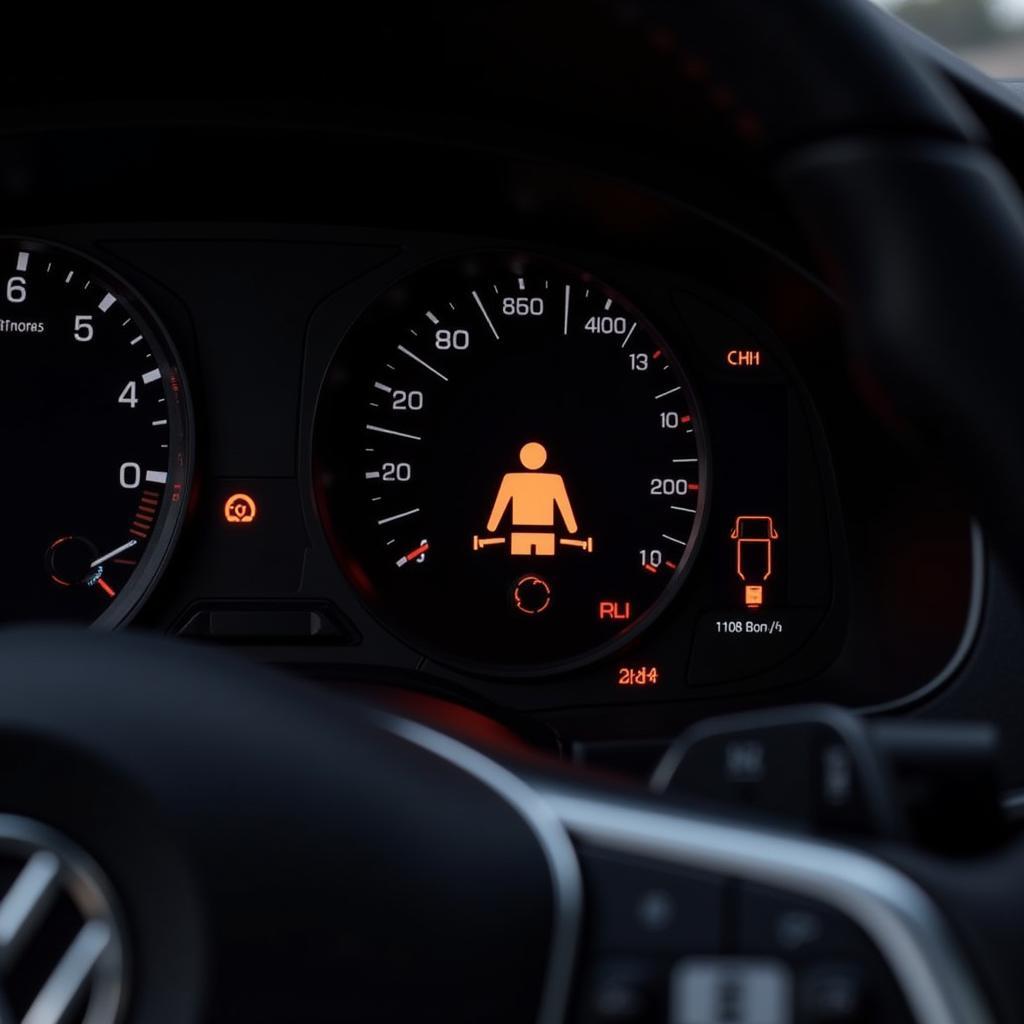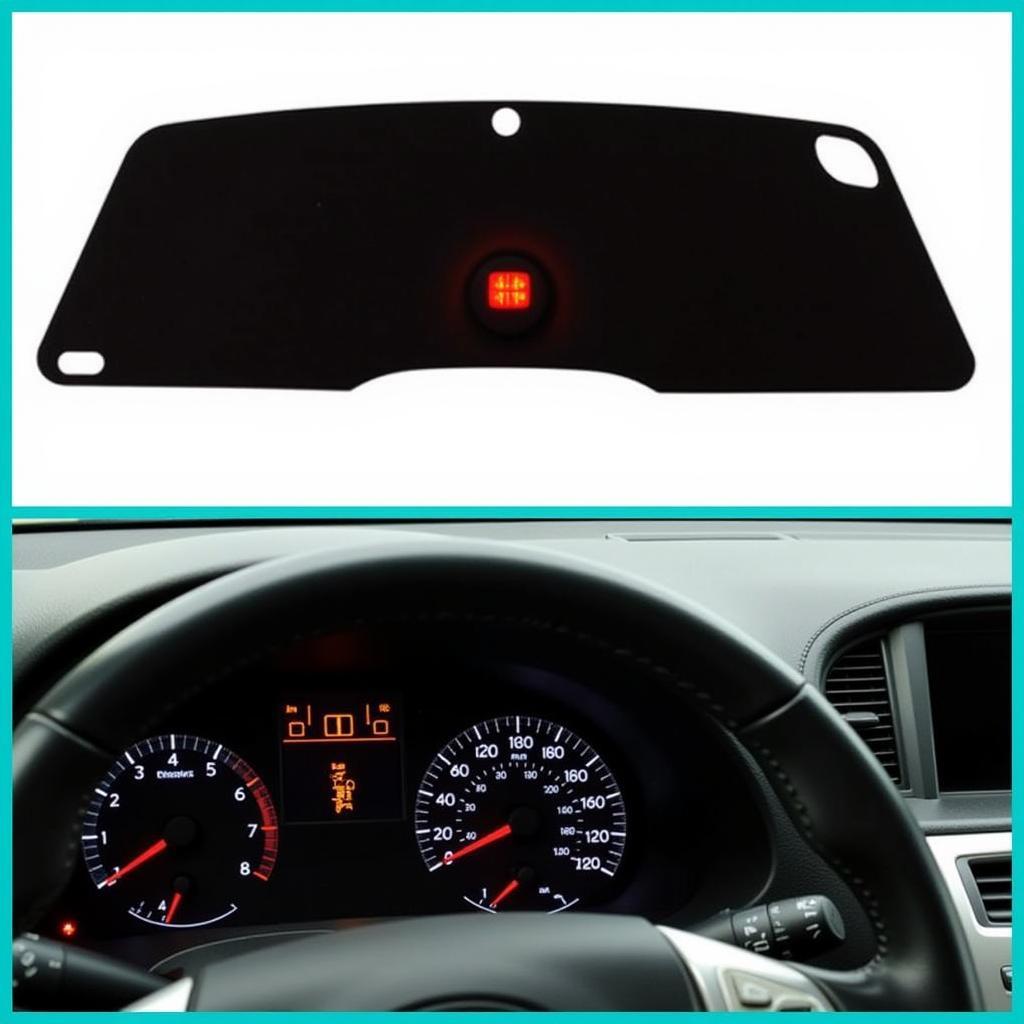The persistent beep and flashing light on your dashboard indicating a seat belt warning fault in your Volkswagen Golf can be an unwelcome distraction. While the cause might seem simple – an unfastened seat belt – several underlying issues can trigger this warning. This guide dives into the common causes of a golf seat belt warning fault, how to diagnose them, and the steps to resolve them.
Understanding the Seat Belt Warning System
Your VW Golf is equipped with a sophisticated safety system designed to ensure you and your passengers are securely restrained. At its heart is the seat belt warning system, comprising sensors, a control module, and warning indicators. Here’s how it works:
- Sensors: Your car has sensors in the seat belt buckles and, in some models, under the seats. These sensors detect when a seat belt is fastened or unfastened.
- Control Module: The information from the sensors is relayed to the airbag control module. This module monitors the signals and determines if a fault exists.
- Warning Indicators: If the module detects a fault, it triggers visual and audible warnings, typically a flashing seat belt warning light on the dashboard and a repetitive chime.
Common Causes of a Golf Seat Belt Warning Fault
A persistent seat belt warning light doesn’t always point to an unbuckled seat belt. Here are the common culprits:
1. Faulty Seat Belt Buckle:
Over time, the buckle mechanism, particularly the microswitch within, can wear out, get jammed with debris, or become corroded. This prevents the sensor from detecting the buckle’s engagement, triggering the warning light even when the seat belt is fastened.
2. Damaged Wiring:
The wiring harness connecting the buckle sensor to the control module can be susceptible to damage. This can occur due to wear and tear, rodent damage, or even improper installation of aftermarket accessories. A break in the wiring can interrupt the signal flow, causing a false warning.
3. Faulty Seat Belt Pretensioner:
Some Golf models are equipped with seat belt pretensioners, which tighten the seat belts during a collision. These pretensioners have their own wiring and sensors. A fault in this system, often due to a deployed pretensioner after an accident, can trigger the seat belt warning light.
4. Software Glitch:
Like any electronic system, your car’s software isn’t immune to glitches. A temporary malfunction in the airbag control module software can cause various issues, including a false seat belt warning.
5. Malfunctioning Airbag Control Module:
In rarer instances, the airbag control module itself may malfunction. This can happen due to electrical problems, water damage, or simply age. A faulty module can send erratic signals, resulting in a persistent warning light.
 VW Golf Dashboard Warning Light
VW Golf Dashboard Warning Light
Diagnosing the Problem
Before rushing to a mechanic, there are a few things you can check yourself:
- Check the Obvious: Ensure all seat belts, including the passenger and rear seats, are properly fastened. Sometimes the simplest solution is the right one.
- Inspect the Buckles: Visually examine the buckles for any signs of physical damage, debris, or corrosion. Try fastening and unfastening the buckles a few times to dislodge any potential obstructions.
- Check for Diagnostic Trouble Codes (DTCs): If you have access to an OBD-II scanner, you can check for any stored DTCs related to the seat belt system. These codes can provide valuable clues about the source of the fault.
Resolving the Seat Belt Warning Fault
Depending on the diagnosis, the solution can range from simple DIY fixes to professional repair:
1. Buckle Cleaning and Adjustment:
For dirty or slightly misaligned buckles, cleaning with compressed air and a contact cleaner might resolve the issue.
2. Wiring Harness Repair:
If you suspect damaged wiring, consult a qualified mechanic. They can inspect the wiring harness, identify the fault, and repair or replace the damaged section.
3. Seat Belt Pretensioner Replacement:
A faulty seat belt pretensioner usually requires replacement. This is a job best left to professionals, as it involves working with safety-critical components.
4. Software Update or Reset:
A software glitch can sometimes be resolved with a simple software update or reset. Your dealership or a qualified mechanic with access to Volkswagen diagnostic tools can perform this procedure.
5. Airbag Control Module Replacement:
A malfunctioning airbag control module typically requires replacement. This is a complex and potentially expensive repair that should only be handled by qualified professionals.
Expert Insights
“Many car owners overlook the importance of regular checks on their seat belt system,” says John Miller, a senior automotive electrician with over 20 years of experience. “Just like any other component in your car, the seat belt system is subject to wear and tear. Regular inspection and maintenance can prevent minor issues from escalating into major problems.”
 Mechanic Inspecting Seat Belt Buckle
Mechanic Inspecting Seat Belt Buckle
Can I Ignore the Seat Belt Warning Fault?
While the constant chime might be tempting to ignore, it’s crucial to remember that the seat belt warning system is there for your safety. Driving with a faulty system not only compromises your safety but can also affect your car’s airbag deployment in case of an accident. Moreover, a persistent warning light can be a distraction while driving.
Conclusion
A golf seat belt warning fault should never be ignored. Understanding the common causes and taking the appropriate steps to diagnose and address the issue will ensure your safety and keep your VW Golf running smoothly. If you’re unsure about diagnosing or fixing the problem yourself, always consult a qualified mechanic.
FAQ
1. Can I disable the seat belt warning chime?
While technically possible, tampering with safety features is strongly discouraged as it can void your warranty and, more importantly, compromise your safety.
2. How often should I check my seat belts?
It’s recommended to visually inspect your seat belts for signs of wear and tear every six months or as part of your regular car maintenance.
3. Does the seat belt warning system affect the airbag system?
Yes, in some car models, a faulty seat belt system can disable the airbags or affect their deployment in an accident.
4. My seat belt warning light went off after I fastened my seat belt. Is the problem solved?
If the warning light goes off and stays off after you fasten your seat belt, it’s likely a temporary glitch. However, it’s best to monitor the situation and consult a mechanic if the issue persists.
5. How much does it cost to fix a golf seat belt warning fault?
The repair cost can vary widely depending on the underlying cause, ranging from a few dollars for a simple buckle cleaning to several hundred dollars for a control module replacement.

